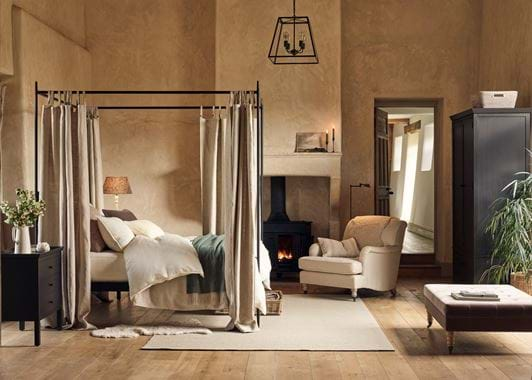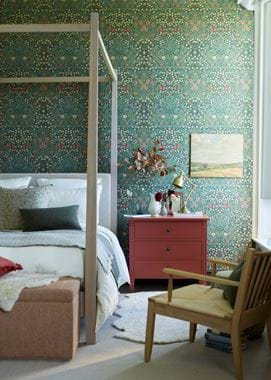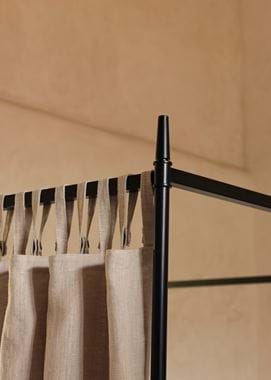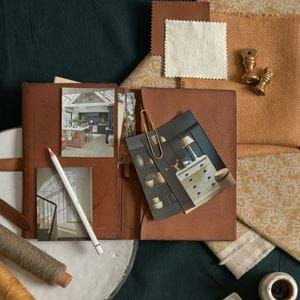The tale of the four-poster bed
The tale of the four-poster bed
So called ‘the bed of kings, and the king of beds’, the four-poster has occupied bedrooms as far back as the fourteenth century. Traditionally grandiose in design and popular with nobility, it’s no wonder this style of bed has come to represent a romantic, fairy tale-type opulence. Yet behind its elaborate carvings, trimmings, and ties with royalty, you’ll find a bed with surprisingly functional beginnings.
Thought to have originated from Austria, the earliest examples of a sheltered-style bed can be traced back to the thirteenth century. Yet these designs comprised simply of a canopy suspended by cords from beams above the bed. It would be another century before the iconic four posts and side curtains made an appearance. Their purpose? A purely practical one: to provide privacy and warmth. A necessity in cold, draughty rooms, and those shared with servants.
By the Tudor period, the previously unassuming four-poster bed had been adopted by English royalty and aristocracy. It became a symbol of wealth and status and was used to hold court during the waking hours. Designs grew ever larger and more elaborate as a result. Towering oak posts (or walnut, for the very rich), lavish curtains and canopies known as ‘testers’, intricate carvings – often featuring a family coat of arms – and gilding were all typical of the time.
Perhaps one of the most famous examples of this style of extravagant four-poster is The Great Bed of Ware. Built in Hertfordshire in the late 1500s, it stands (currently in the Victoria and Albert Museum in London) at over three metres wide. So grand was its scale and design that visitors travelled from near and far to visit or stay in the inn where it was housed in Ware. Its posts and headboard are heavily initialed, charting the history of its visitors, and both Shakespeare and Byron have immortalised it in their works.
The arrival of the seventeenth century brought with it another type of four-poster bed, this time from France. Taller, narrower and made typically from beechwood, the look was lighter and less ornate (though still intricate by today’s standards). Later still, as bedrooms were troubled less by draughts, sheer drapes and light linens replaced heavy brocade and velvet curtains, and many beds lost their roof-like tester altogether. Finally, by the Victorian era, wooden frames made way for wrought iron.
Our own four-poster beds
Wooden Wardley and our new metal Coniston design take their cues from pared-back post-Tudor styles. Think clean, contemporary lines and a lighter, airier feel than early examples. Both will command attention – such is the nature of a four-poster bed – yet neither design will overwhelm your room or leave it feeling too formal. Both too can be paired with our Flora four-poster bed curtains. While Wardley has a simple, sturdy oak frame that can be painted, if you like, Coniston’s frame is made from wrought iron with elegant, tapered finials and feet. It’s also the first of our four-poster beds that can be converted into a standard style by removing the upper frame and posts. Just the thing if you’re moving home or relocating it to a room with lower ceilings later down the line.
See all the beds in our collection here.








